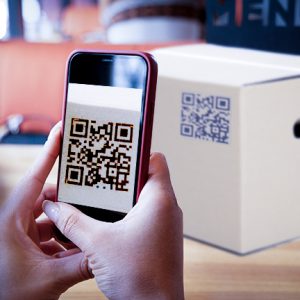Harnessing Manufacturing Efficiency: With the Power of Manufacturing Traceability Software from Raw Material to Finished Goods
Manufacturing Traceability Software is a critical enabler in today’s world since it maintains visibility and control across the whole process of production. From the receipt of raw material to the production of the final product, traceability software allows a manufacturer to maintain quality, comply with regulations, and optimize operations. This blog post takes a deep dive into how traceability software deals with raw materials, from goods receipt to label printing and the putaway process to picking and issuing.
Goods Receipt
1. Goods Receipt: The First Step in Manufacturing Traceability Software
- Verification and Recording: When raw materials arrive at the manufacturing facility, traceability software is used to verify and record the receipt of goods. This ensures that the correct quantities and types of materials are received as per the purchase order.
- Quality Inspection: The software can also integrate with quality inspection processes, ensuring that the received materials meet predefined quality standards. Any discrepancies or defects can be recorded and managed effectively.
- Real-Time Data Entry: The system allows for real-time data entry, providing instant visibility into inventory levels and enabling timely decision-making.
2. Label Print: Enhancing Identification and Tracking
- Barcode Generation: Once the goods are received and verified, the traceability software generates unique barcodes for each batch or individual item. These barcodes are printed as labels and attached to the materials.
- QR Codes and RFID Tags: In addition to traditional barcodes, the software can also generate QR codes and RFID tags, enhancing the ability to track and trace materials throughout the supply chain.
- Detailed Information: Labels typically include detailed information such as batch numbers, expiration dates, and supplier details, which are crucial for traceability and compliance.
3. Putaway Process: Organizing Raw Materials Efficiently
- Location Management: The putaway process involves storing the received materials in designated locations within the warehouse. Traceability software helps manage this process by assigning optimal storage locations based on various factors such as material type, storage conditions, and usage frequency.
- Guided Putaway: Warehouse staff can use handheld devices or tablets connected to the traceability system to receive guided instructions for the putaway process, reducing errors and improving efficiency.
- Inventory Updates: As materials are put away, the software updates the inventory records in real-time, ensuring accurate and up-to-date inventory levels.
4. Picking & Issue: Streamlining Material Flow
- Order Processing: When a production order is generated, the traceability software facilitates the picking process by identifying the exact location of the required materials. This ensures that the correct items are picked and issued for production.
- Batch and Lot Tracking: The software tracks batch and lot numbers throughout the picking process, ensuring that the right materials are used in production and enabling easy tracing of materials in case of quality issues or recalls.
- Real-Time Monitoring: Real-time monitoring and updates during the picking and issuing process help maintain accurate inventory levels and prevent stockouts or overstock situations.
Benefits of Using Manufacturing Traceability Software
1. Enhanced Visibility and Control
- Traceability software provides complete visibility into the movement and status of raw materials, enabling manufacturers to track materials from receipt to final product.
2. Improved Quality Management
- By integrating quality checks at various stages, the software helps maintain high-quality standards and quickly addresses any quality issues that arise.
3. Regulatory Compliance
- Traceability software ensures compliance with industry regulations by maintaining detailed records of materials and their movements, making it easier to generate compliance reports.
4. Efficiency and Productivity
- Automation of manual processes such as labeling, putaway, and picking reduces errors and enhances operational efficiency, leading to increased productivity.
5. Cost Savings
- Accurate tracking and efficient management of materials help reduce waste, minimize stockouts, and optimize inventory levels, resulting in significant cost savings.

How to Implement Traceability Software in Manufacturing
Implementing traceability software in a manufacturing setting requires careful planning and execution. Start by assessing your current processes and identifying areas where traceability can add value. Engage with a reliable software provider to customize a solution that fits your specific needs.
Top Features of Manufacturing Traceability Software
Top features of manufacturing traceability software include real-time tracking, batch and lot tracking, integration with quality control processes, and the ability to generate comprehensive compliance reports. Look for software that offers user-friendly interfaces and robust data analytics capabilities.
Real-Time Production Tracking with Traceability Software
Real-time production tracking with traceability software allows manufacturers to monitor the status of production processes as they happen. This feature helps in making timely decisions, optimizing workflows, and ensuring that production schedules are adhered to.
Case Studies of Manufacturing Companies Using Traceability Software
Case studies of manufacturing companies demonstrate the tangible benefits of using traceability software. For instance, a food manufacturer might use traceability software to ensure compliance with food safety regulations, while an electronics manufacturer uses it to track components throughout the supply chain.
Manufacturing Traceability Software Compliance
Traceability software for compliance helps manufacturers meet industry regulations by providing detailed records of material movements and production processes. This capability is crucial for industries with stringent compliance requirements, such as pharmaceuticals and food production.
Manufacturing traceability software is an indispensable tool for modern manufacturers, providing the visibility, control, and efficiency needed to manage raw materials effectively. By leveraging this technology, manufacturers can ensure the quality and integrity of their products, comply with regulations, and optimize their operations from the moment raw materials are received to the final delivery of finished goods.



